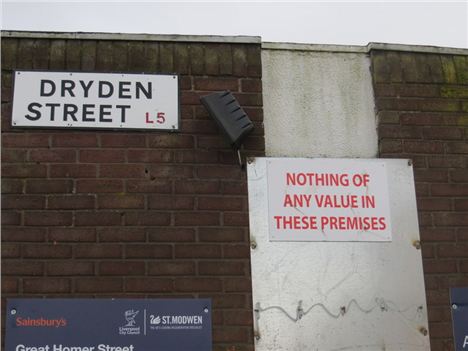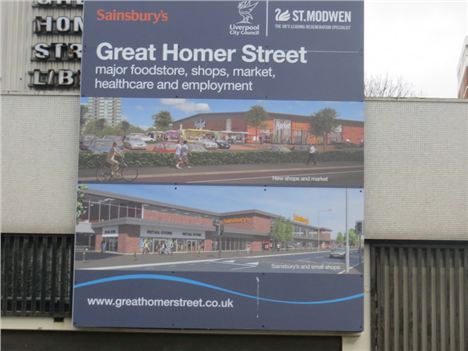IT'S as synonymous with Liverpool life as Anfield, the Beatles and Everton Mints, but is there a future for “Greaty” - The Great Homer Street market?
It is doomed, insists one group of traders who have been plying their trade for generations – including one with more than 40 years on the street.
'All we want is what we have always been promised and that is 300 stalls trading every Saturday in the heart of the project, rather than be shifted beyond the boundaries of the new Great Homer Street development'
Read the carefully crafted communiqué from Dale Street and all seems well with Project Jennifer, a £100m project, with claims it will create 1,000 new jobs, Liverpool’s biggest supermarket (a Sainsbury's), shops, homes and a brand new home for the popular market, founded more than 180 years ago.
The council insists the proposals are backed by the market traders themselves. But a procession of market traders have told Liverpool Confidential they have NOT been consulted and oppose the move to what they call a backwater that could spell the end for the market.
Project Jennifer is being led by development company St Modwen in conjunction with the city council.
Original plans show the market at the heart of the retail development, but it has now been shunted to a site on the sidelines because, it is claimed, there's no longer any space for it in the scheme of things.
Instead, the permanent home for the indoor and outdoor market is Dryden Street, hundreds of yards down the road from the main buzz of the new stores and behind a 7ft fence.
Will people really park their cars at Sainsbury's, do their weekly shop and then make the long trek down the road to the new, Not-The-Great-Homer-Street-Market? Many of the traders think not and fear there is a bigger business agenda.
Cllr Malcolm Kennedy, city cabinet member for regeneration, said in the announcement: “We have listened to the views of the market traders and customers... and responded to their needs … and demonstrates our commitment to delivering this vital scheme.
“The new market at Dryden Street will complement the development at Great Homer Street and will provide a first class facility that will enable it to thrive.”
The council says it has been working closely with St Modwen and the city's market operator Groupe Geraud to “determine the best location which will see it (the market) move from its current position to make way for the comprehensive regeneration of Great Homer Street”.
But best location for who? ask the traders.
The Dryden Street site represents a "significant investment" says the council, and will include the creation of an indoor and partially covered outdoor market and parking on one site for customers and traders' vans.
Although its construction is some way down the line, all the Greaty stallholders have been told they must pack up and move there this May, to a temporary housing.
 West side story: The market here be cleared to make way for Sainsbury's
West side story: The market here be cleared to make way for Sainsbury's
Here's the current lie of the land. The Saturday market, which attracts thousands of visitors, takes place on each side of Great Homer Street, a highway which is now dividing traders in more ways than one.
It seems representatives of those on the west side of the street back the move to Dryden Street. Their home is destined to close this May, anyway, to enable demolition to start so the new Sainsbury's can be built.
But on the opposite of Great Homer St it is a different story. Traders on the east side, who set up their stalls along the pavement in front of the shopping arcade, say they are being pushed out after being the street’s major draw for decades.
Seller Billy Darwin (pictured top, right) accused the council, St Modwen and Geraud Markets of breaking promises. He fears the traders of Great Homer Street are being brushed aside by the council, virtually sacrificed to make way for the new big shops.
“This is creating anger and frustration and even more so after Councillor Kennedy said the shopkeepers and market traders of Great Homer Street have been consulted and are happy to move. This could not be further from the truth,” he said.
“There is not one shopkeeper or market trader on the east side - which is by far the largest part of the market - who wants to move to Dryden Street, a back-street location away from the main multi million pound development which is Project Jennifer. Why would anybody willingly go to what is outside the main development area?

“The market traders and shopkeepers have always been 100pc behind Project Jennifer and that has never changed. All we want is what we have always been promised and that is 300 stalls trading every Saturday in the heart of the project, rather than to be shifted beyond the boundaries of the new Great Homer Street development which will cause great harm to our businesses, our livelihoods and great harm to one of Liverpool's great traditions - the world famous Greaty market.”
He went on: “Many traders have been trading here for many years, a lot of them on the same pitches passed down through their families.
“What was promised was moving to Dryden Street on a temporary basis and then moving back into the heart of Project Jennifer.”
The east-side traders also claim they had been told they could stay put until the end of 2015 when regeneration there is set to begin. Trader Tom Stalker (pictured top, left) said the east-side precinct shops and market stalls mutually support each other and all will suffer if the stalls move away this May.
“I just feel the market will die away. We need to sit down and talk with Mayor Anderson and Cllr Kennedy, but without the bullying we have faced from some quarters in the past.”
Cllr Kennedy told Liverpool Confidential he was aware of an “alternative view” but insisted: “The issue has been discussed in a stakeholders group which has included official representatives of the traders.”
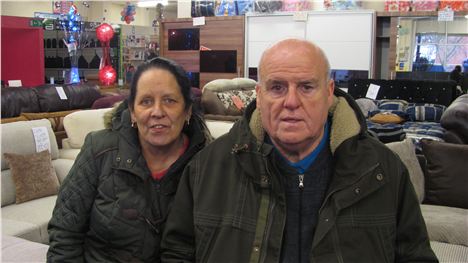 Christine and John Burns: 'We want to see a market close to Sainsbury's'
Christine and John Burns: 'We want to see a market close to Sainsbury's'
He said: “The issue was that the space was limited in the Project Jennifer development and the discussion then centred on an alternative site.
“The options were to move temporarily across the road for one year and then to Dryden Street where a purpose built market would be built with a covered area and parking, or to make the transfer in one move now. Consultation in the stakeholder group indicated that the second option was preferred although an alternative view has been put forward by the people you have been talking to.”
Meanwhile the anger, fear and mixed messages continue.
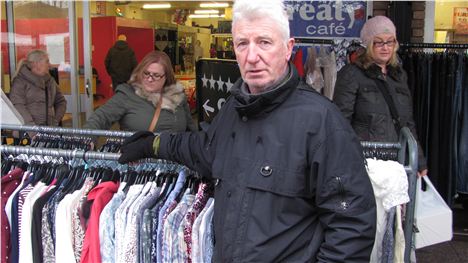 Pat Bartley: 'I’d have to be mad to want to move over to Dryden Street'
Pat Bartley: 'I’d have to be mad to want to move over to Dryden Street'
Long-term stallholder Pat Bartley said: “I’d like to stay where I am as long as I can. Moving to Dryden Street will be a gamble for the market traders, especially if it is an enclosed market. Surely after 40 years here I ought to have some rights about what happens. This is my livelihood. I’d have to be mad to want to move over to Dryden Street. I’ve been to have a look at the site and it won’t work.”
John Burns who runs a Great Homer Street shop with his wife, Christine, said: “We want to see a market close to Sainsbury's. The council just isn’t being fair to the market traders. We all fear we are just going to be phased out.”
The traders and shopkeepers have now formed a joint committee to present a united front to the council and representatives will be putting their case to Cllr Kennedy in a meeting tomorrow (January 10).
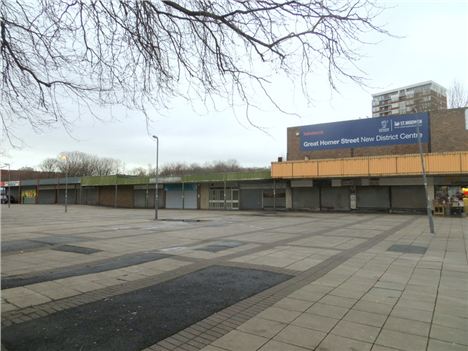 Grim and desolate: Great Homer Street precinct on a weekday
Grim and desolate: Great Homer Street precinct on a weekday
Project Jennifer has been on the drawing board for at least a decade and nobody who has taken a walk down a grim and desolate Great Homer Street on a weekday can argue that it won't bring huge benefits to one of the city's most run-down areas and attract new investment.
Nevertheless, while many east side traders were initially prepared to go to Dryden Street at the end of 2015, some are now having second thoughts altogether, realising an enclosed market will lose the attraction of a high street presence.
“We are small businesses trying to make ends meet, working in all weathers to support our families," says Billy Darwin. “The council and Geraud Markets have got to stop treating us market traders like second class citizens.”










